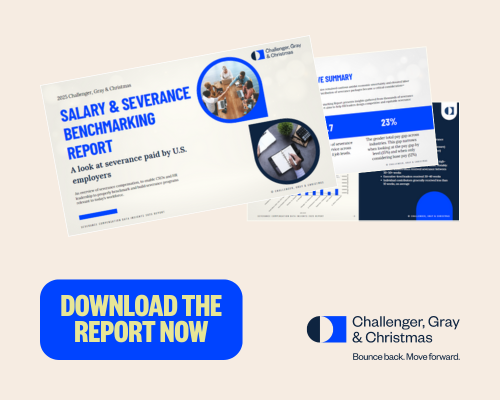
Jan 19 Industry Breakdown: Who’s Paying the Most in Severance — and Why
What your industry’s severance practices reveal about strategy, competition, and care.
When layoffs happen, HR leaders know two questions always come up: What’s fair? and What’s standard?
The 2025 report (based on 2024 data) shows that the answers vary dramatically by industry. According to Challenger, Gray & Christmas’ 2025 Severance & Salary Benchmarking Report, average severance offerings range from as low as 10 weeks in retail to as high as 35 weeks in chemicals.
These differences aren’t random — they tell a story about industry margins, talent competitiveness, and leadership priorities.
Key Takeaways:
- Severance varies dramatically by industry — from an average of 10 weeks in Retail to 35 weeks in Chemicals.
- Generosity often aligns with margin strength, brand visibility, and talent competition.
- High-severance sectors (Chemicals, Banking, Media) treat offboarding as brand protection.
- Benchmarking by industry helps HR leaders justify budgets and design credible, competitive programs.
Industries Setting the Pace
The 2025 report revealed which sectors are leading the way in competitive, values-driven offboarding:
- Chemicals: Average of 35.3 weeks, the most generous of all industries.
- Aerospace & Aviation: 23.2 weeks on average.
- Banking & Finance: 22.2 weeks, with some leaders receiving up to 78 weeks.
- Healthcare & Related Services: 21.1 weeks, reflecting post-pandemic retention efforts.
- Media: 28.1 weeks, suggesting strong emphasis on brand and alumni relations.
At the other end of the spectrum, retail (10.2 weeks) and technology (11.2 weeks) trailed, underscoring the financial pressures and high turnover rates common in those sectors.
What’s Driving the Difference
Each industry’s severance strategy reflects its workforce dynamics:
- High-margin sectors like finance and chemicals can afford more robust packages to protect reputation and attract top talent.
- Heavily scrutinized sectors like media and healthcare prioritize brand perception and alumni advocacy.
- Low-margin sectors like retail and logistics often focus on speed and scale, sometimes at the expense of perceived fairness.
Yet even in leaner industries, HR leaders are finding creative ways to demonstrate care — through outplacement, manager communication training, and transparent processes that preserve trust.
Benchmarking as a Strategic Tool
Benchmarking severance by industry does more than check a compliance box. It gives HR and finance leaders a credible baseline for policy design — and a data-driven story to tell when negotiating budgets.
It enables you to answer:
- Are we competitive in our industry?
- Are we protecting our brand and future hiring pipeline?
- Do our severance practices match our stated values?
Those are the questions that define leadership — not just policy.
Get the Full 2025 Severance & Salary Benchmarking Report
Explore the full industry data, including benchmarks for 20+ sectors and compensation trends by region and level.

